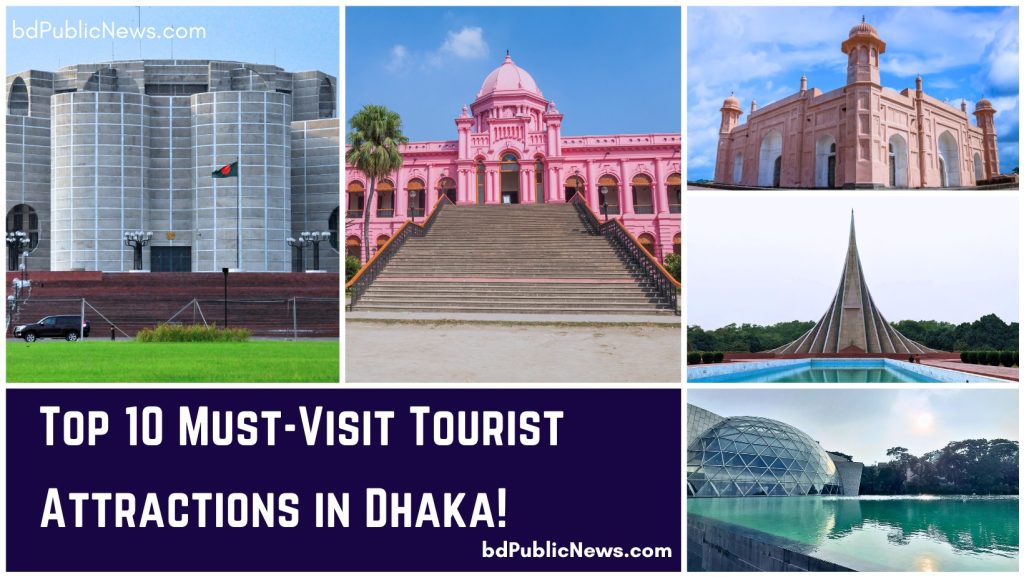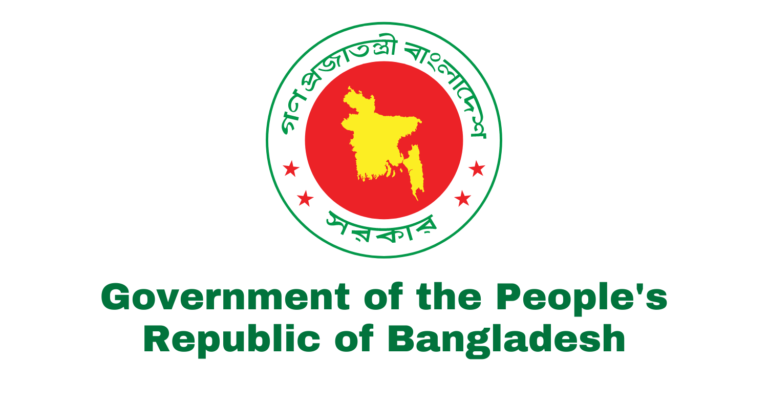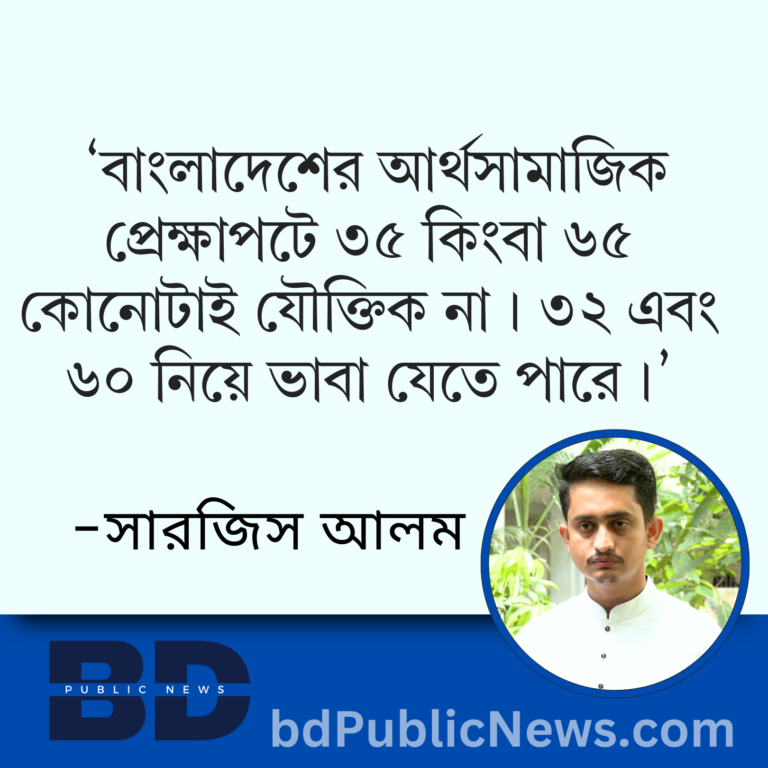Top 10 Must-Visit Tourist Attractions in Dhaka
Explore Dhaka: Top 10 Must-Visit Place in Dhaka During Anytime or Vacations
Introduction
Dhaka, the heart of Bangladesh, is a city where the past and the present converge in a vibrant tapestry of sights, sounds, and colors. Known for its rich history, architectural marvels, and dynamic culture, Dhaka transforms into an even more lively and festive city during Eid and vacation periods. The city’s diverse array of attractions, from majestic historical monuments to modern urban landscapes, offers something for every type of traveler.
Eid in Dhaka is a spectacle of communal joy and spirituality. The city’s mosques and open spaces overflow with devotees, while markets and bazaars buzz with festive fervor. This period offers a unique opportunity for visitors to immerse themselves in the local culture and witness the traditions that shape the identity of this bustling metropolis.
In this blog, we will journey through the top 10 tourist points in Dhaka City that captivate visitors with their beauty, historical significance, and cultural depth, especially during Eid and vacation times. From the ancient walls of Lalbagh Fort to the serene waters of Hatirjheel, join us as we explore the landmarks that make Dhaka a city worth visiting time and again.
1. Lalbagh Fort: A Monumental Legacy
Lalbagh Fort, a 17th-century Mughal fort complex, is a testament to Dhaka’s rich historical tapestry. Situated in Old Dhaka, it offers a glimpse into the city’s glorious past with its well-preserved architecture, including a mosque, a tomb, and several other buildings set amidst beautifully manicured gardens. The fort becomes a focal point of celebration during Eid, attracting visitors with its serene ambiance and the chance to explore Dhaka’s heritage up close.
Visitors to Lalbagh Fort during Eid can enjoy the festive atmosphere that envelops the city, making it an ideal time to capture the spirit of Dhaka in celebration. The fort’s architectural beauty is accentuated by the joyous mood, with families and groups of friends gathering to mark the occasion in its historic surroundings.
For those planning a visit, the fort is open daily, except for Sundays. A small entry fee is charged, which goes towards the maintenance of the site. Guided tours are available, offering insightful narratives about the fort’s history and significance. Whether you’re a history buff, a photography enthusiast, or simply looking for a peaceful retreat in the city, Lalbagh Fort is a must-visit destination in Dhaka.
2. Ahsan Manzil (Pink Palace): A Glimpse into Royal Bengal
Ahsan Manzil, known as the Pink Palace, once the residence of the Nawab of Dhaka, stands as a striking symbol of Bangladesh’s colonial heritage. Painted in a vibrant pink hue, this architectural masterpiece located on the banks of the Buriganga River, offers visitors a window into the lavish lifestyle of Bengal’s aristocracy. The palace, now a museum, houses exhibits that tell the story of Dhaka’s history and culture, from exquisite furniture to photographs and paintings from the British period.
During Eid and other vacations, Ahsan Manzil becomes a bustling attraction, drawing families and history enthusiasts eager to explore its grandeur. The palace’s gardens and open spaces serve as a beautiful backdrop for Eid celebrations, where visitors can enjoy the festive atmosphere amidst the elegance of royal architecture.
For a fulfilling visit, it’s advisable to check the museum’s opening hours, as they may vary during holidays. A nominal entrance fee grants access to both the museum and the grounds, making it a worthwhile stop for those interested in architecture, history, or simply looking to capture the beauty of one of Dhaka’s most iconic buildings.
3. National Martyrs’ Memorial (Jatiyo Sriti Shoudho): A Tribute to Heroes
The National Martyrs’ Memorial (Jatiyo Sriti Shoudho), located in Savar, just outside Dhaka, is a powerful symbol of Bangladesh’s struggle for independence and the ultimate sacrifice of its martyrs. The monument’s striking design, featuring seven triangular structures that stand for the seven core principles of the nation’s liberation war, makes it a poignant site for reflection and remembrance.
Visiting the memorial during national holidays, particularly around Eid, offers a unique perspective on Bangladesh’s national pride and collective memory. The place is not just for tourists to visit; it’s a place of homage and education, where visitors can learn about the country’s path to independence and the values that continue to guide it.
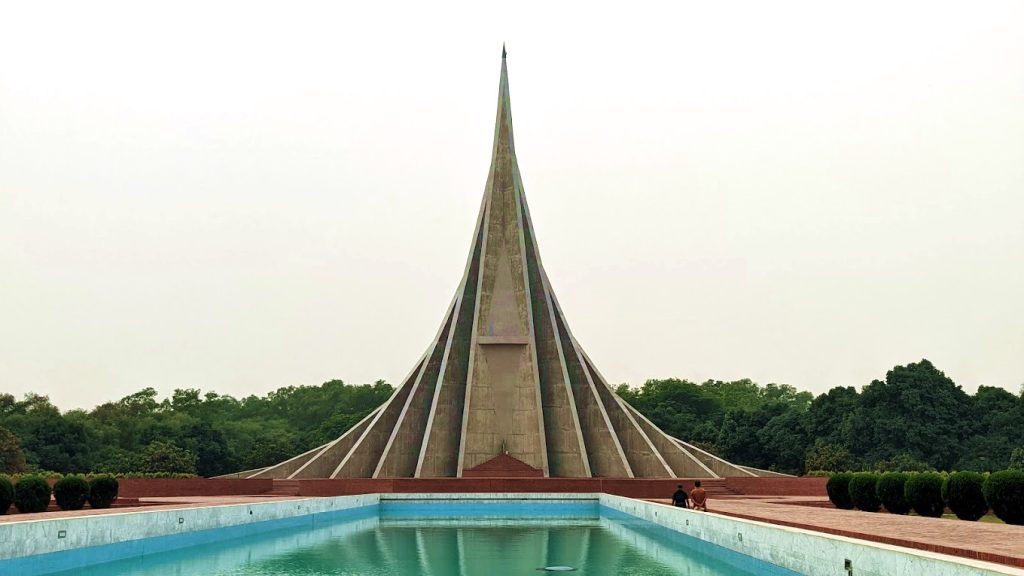
The memorial grounds are open to the public year-round, with no entrance fee. People visiting are urged to treat the place with respect and spend time understanding its history and emotional importance. The surrounding parkland also provides a peaceful environment for contemplation and family gatherings, especially during holidays when the spirit of unity and patriotism is most palpable.
4. National Parliament House (Jatiya Sangsad Bhaban): Architectural Masterpiece
The National Parliament House of Bangladesh, created by the famous architect Louis Kahn, is recognized as one of the architectural wonders of the 20th century. Situated in the heart of Dhaka, its unique design blends modernist sensibilities with elements inspired by Bangladesh’s natural landscape and cultural heritage. The complex is not only the seat of the nation’s government but also a work of art, attracting architecture aficionados and casual tourists alike.
During national celebrations and vacations, the Parliament House area becomes a place of activity and festivity. Although access to the interior is restricted and requires prior permission, the expansive grounds and water features around the building are accessible to the public. These outdoor areas provide a peaceful environment for Eid festivities, picnics, and relaxing walks, offering a break from the busy city life of Dhaka.
For architecture enthusiasts, a guided tour can offer deeper insights into Kahn’s design philosophy and the building’s significance in Bangladesh’s political and cultural landscape. Planning a visit around Eid or national holidays can add a layer of festive joy to the experience, making it a memorable part of any Dhaka itinerary.
5. Star Mosque (Tara Masjid): A Celestial Beauty
The Star Mosque, also known as Tara Masjid, is one of Dhaka’s most enchanting religious sites, renowned for its exquisite tile work that features stars, hence its name. This mosque is a shining example of Islamic art and architecture, with its walls and domes adorned with blue stars on a white mosaic background. Despite its small size, the mosque holds a significant place in the hearts of Dhaka’s residents and is a must-visit for those seeking spiritual tranquility and architectural beauty.
Eid prayers at the Star Mosque are a profoundly spiritual experience, drawing worshippers from across the city. The mosque’s courtyard and surrounding area come alive during Eid, filled with the faithful performing prayers and sharing greetings. For tourists, witnessing Eid prayers here offers a unique glimpse into the cultural and religious fabric of Dhaka.
Visitors are welcome outside prayer times, and photography is allowed, offering a chance to capture the stunning details of the mosque’s design. However, it’s important to dress modestly and respect the mosque’s guidelines to ensure a respectful visit.
6. Bangabandhu Military Museum: A Journey Through History
The Bangabandhu Military Museum pays homage to the military history of Bangladesh and its liberation war. The museum is named after the Father of the Nation, Bangabandhu Sheikh Mujibur Rahman, and showcases a wide range of military artifacts, documents, and exhibits that narrate the bravery and sacrifices of the Bangladeshi armed forces throughout history, including during the 1971 Liberation War.
Visiting the museum during national holidays and around Eid provides an educational experience, reminding visitors of the struggles and victories that have shaped the nation. The museum’s collection offers insights into Bangladesh’s military evolution and honors those who have served and protected the country.


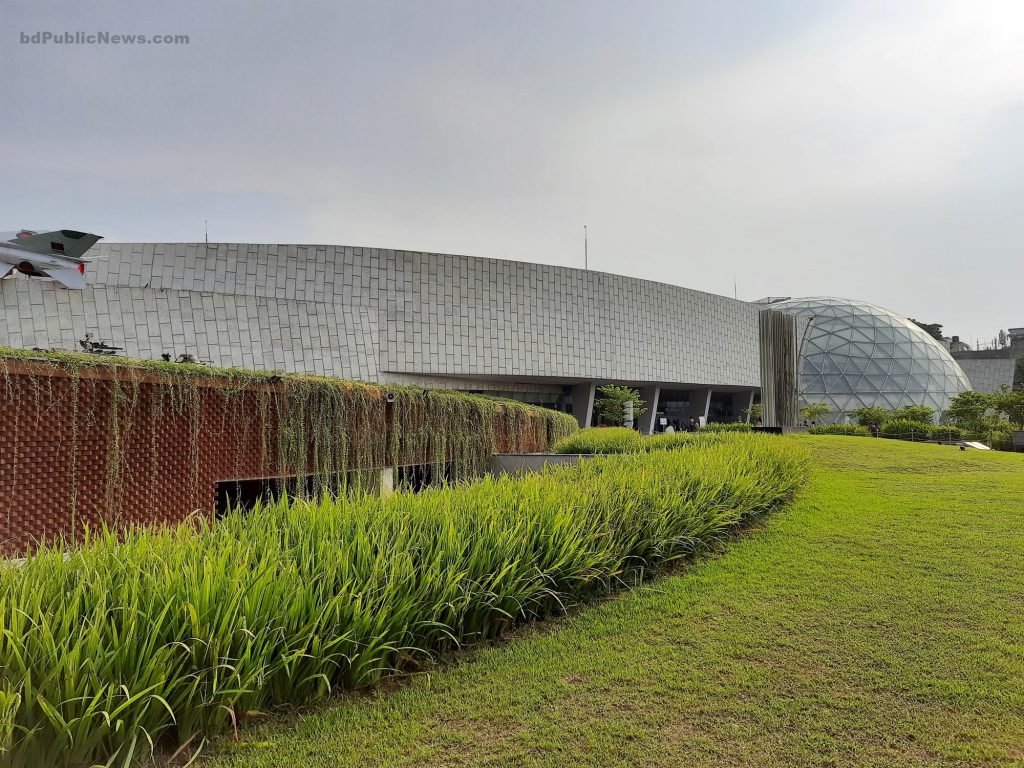
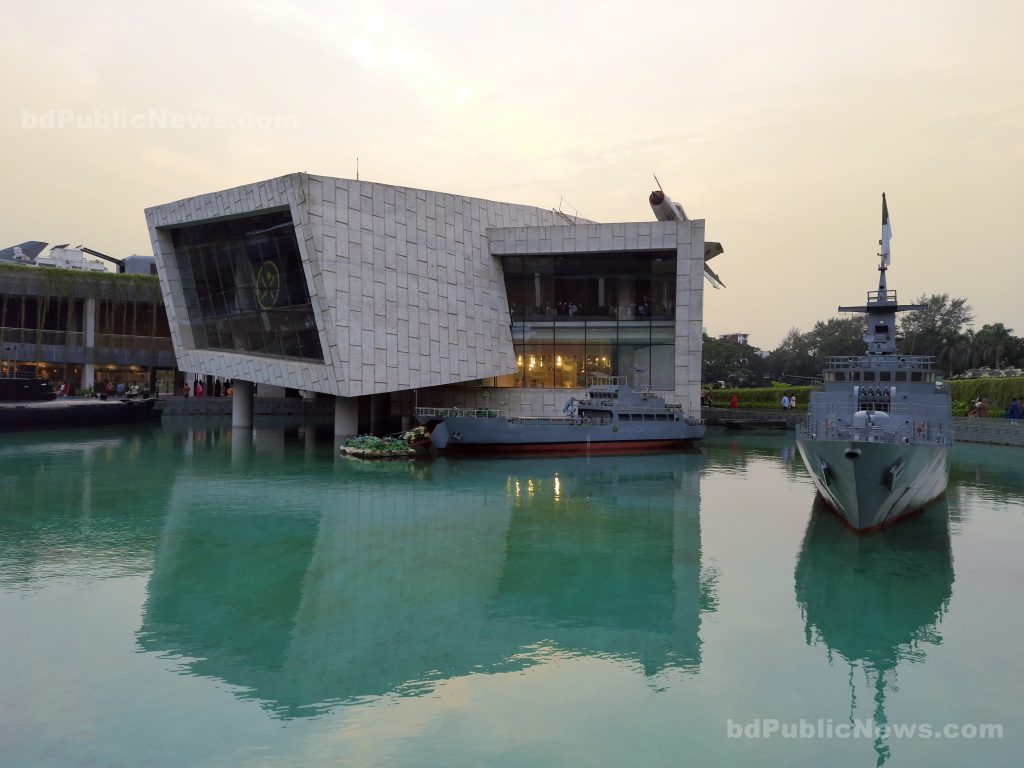

The museum is open to the public with an entry fee. It’s a place of learning and reflection, suitable for all ages, and provides an important perspective on the nation’s history and identity.
7. Liberation War Museum: Preserving Memories
The Liberation War Museum is a poignant tribute to Bangladesh’s struggle for independence and the resilience of its people. It houses artifacts, photographs, and personal stories from the 1971 Bangladesh Liberation War, offering a comprehensive and moving overview of this pivotal period in the country’s history.
Visits during Eid and vacation times can be particularly reflective, as the museum connects visitors with the nation’s past struggles and triumphs. The museum not only educates but also fosters a sense of national pride and unity, making it a meaningful destination for both locals and tourists.
The museum provides guided tours and educational activities for guests, helping them gain a better insight into the importance of the Liberation War. It’s an essential stop for anyone looking to comprehend the sacrifices made for Bangladesh’s freedom.
8. Bangladesh National Museum: A Treasure Trove of Bengali Culture
The Bangladesh National Museum, located in the heart of Dhaka, is an extensive repository of the nation’s history, art, and culture. The museum showcases everything from old artifacts and fossils to modern art and historical papers, giving visitors a complete exploration of Bangladesh’s diverse heritage.
During Eid and vacation periods, the museum sometimes hosts special exhibitions and cultural programs, making it a vibrant place to learn about and celebrate Bengali culture. The diverse collections allow visitors to explore various aspects of Bangladesh’s past and present, from its natural history and ethnography to its liberation struggle.
Admission is affordable, making the museum accessible to all. It’s a perfect destination for families and anyone interested in diving deep into the cultural fabric of Bangladesh.
9. Curzon Hall: A Beacon of Heritage and Education
Curzon Hall, a splendid architectural marvel nestled in the heart of Dhaka, stands as a testament to the city’s rich historical and educational heritage. This magnificent building, part of the University of Dhaka, originally conceived as a town hall, was named after Lord Curzon, the then Viceroy of India, and now serves as a prominent academic building for the Faculty of Sciences.
With its distinctive blend of European and Mughal architectural styles, Curzon Hall is not just an educational institution but also a significant cultural landmark. The hall’s impressive front, detailed terracotta adornments, and beautiful gardens create a scenic setting that draws in researchers, tourists, and fans of history alike.
Curzon Hall is renowned both for its stunning architecture and its historical importance, especially its significant involvement in the Language Movement of 1952. This significant event was instrumental in getting Bengali recognized as one of the official languages of Pakistan. This historical significance adds a layer of cultural depth, making it a place of pilgrimage for those interested in the socio-political history of Bangladesh.
Curzon Hall continues to inspire with its commitment to academic excellence, serving as a hub for scientific inquiry and research. Its classrooms and laboratories buzz with the energy of students and academics dedicated to the pursuit of knowledge across various scientific disciplines.
For visitors, a walk through the corridors of Curzon Hall is like stepping back in time, offering a glimpse into the educational and cultural legacy of Dhaka. It stands as a symbol of the city’s commitment to preserving its historical heritage while fostering an environment of academic growth and innovation.
10. Bangladesh National Zoo (Dhaka Zoo): Wildlife in the Heart of the City
The Bangladesh National Zoo, located in Mirpur, is a sprawling oasis that provides a much-needed escape from Dhaka’s urban environment. Home to a diverse collection of animals from around the world, including Bengal tigers, African lions, elephants, and various species of birds, the zoo offers an educational and entertaining outing for visitors of all ages.
Eid and vacation times see the zoo coming to life with families looking to enjoy the outdoors while learning about wildlife conservation. The zoo’s efforts in education and conservation are particularly highlighted during these periods, with special programs and guided tours designed to engage and inform visitors.
To make the most of your visit, plan to arrive early in the day to avoid the crowds and the heat. The zoo is equipped with amenities such as food stalls and picnic areas, making it ideal for a full-day outing. Admission fees are modest, and the zoo provides a map to help navigate the extensive grounds and exhibits.
Conclusion
Dhaka, a city that beautifully melds its rich past with a vibrant present, offers a plethora of experiences for visitors, especially during Eid and vacation times. From the historical grandeur of Lalbagh Fort and Ahsan Manzil to the cultural depth of the Liberation War Museum and the serene beauty of Hatirjheel, Dhaka invites exploration and appreciation.
Each of these top 10 tourist points presents a different facet of Dhaka’s identity, showcasing the city’s architectural marvels, historical significance, and cultural richness. Whether you’re seeking spiritual solace at the Star Mosque, educational enrichment at the Bangabandhu Military Museum, or a peaceful escape in Hatirjheel, Dhaka has something to offer everyone.
When you’re getting ready to visit Dhaka, make sure to appreciate the city’s variety and dive into its unique mix of history, culture, and contemporary life. Eid and vacation periods provide a special opportunity to experience the warmth and hospitality of Dhaka’s people, making your trip an unforgettable journey into the heart of Bangladesh.

